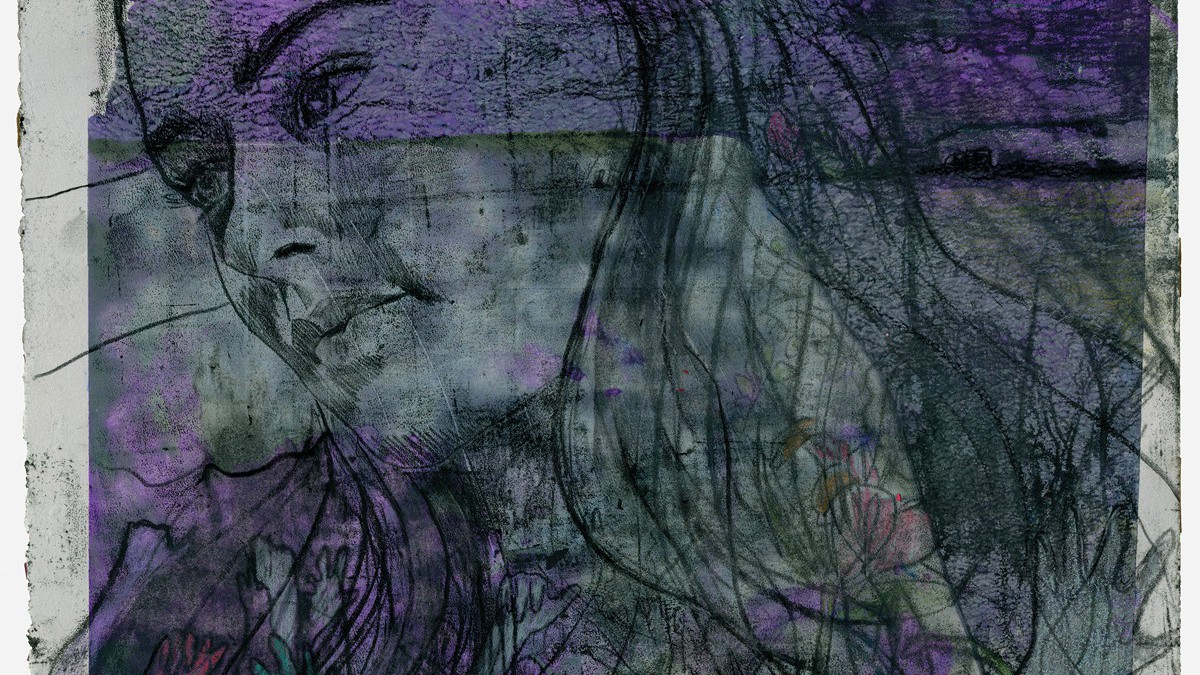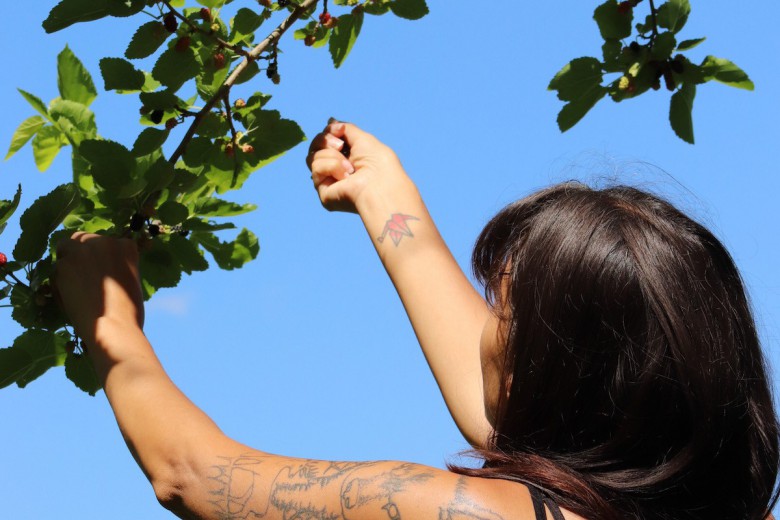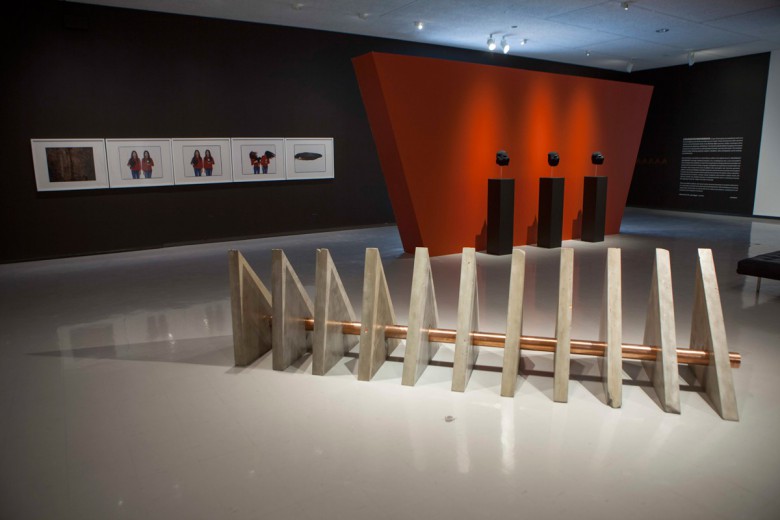One of the first memories I have of my grandmother happened on a sunny summer afternoon. She was looking after me that day. It was rare that I’d need a babysitter; the woman I referred to as my mom almost never went anywhere. Maybe there was a church meeting, perhaps for a committee planning their fall supper. I wasn’t even in school yet and didn’t ask questions. It was only later, when I was far older, that I began to ask.
“Let’s go outside. It’s time to pick the rhubarb and what’s left of the berries,” she told me. “Maybe I’ll make custard for you before your mom comes to pick you up. But don’t tell her – I know it’ll spoil your supper.” She grinned down at me. “Our secret?”
She ruffled my short hair and we headed outdoors into a slight Saskatchewan breeze. My grandma gave instructions, warning me not to pull out the roots of the rhubarb, “because it continues to grow even once it’s plucked.”
Years later, I’d remember those words.
I loved my grandma Lena, and she loved me. It didn’t matter that I was the only Brown grandchild, the only one who wasn’t biologically a part of the family. You would think the same love could be expected from the woman I lived with. The one I called my mom.
***
I am one of the many thousands of First Nations children who were taken at birth – ripped from the arms of Nikawiy (my birth mom) and placed in a white foster home. When it happened to me, they called it the ’60s Scoop – but it wasn’t just the ’60s. It began with the residential schools, with roots that date back to the early 1800s. Today, nearly half of all the children in Canada’s foster care system are Indigenous.
When I was four, maybe five, I remember sitting in the tub, taking a piece of steel wool, and trying to scrub the brown off my skin.
I am Cree and Dene, a child uprooted and raised in a white community that shunned me. I remember the woman I called mom telling me, as a child, that my Nikawiy was probably a sex worker, an alcoholic, and a drug addict, “and that’s why you came here.”
I was told that I was an “ugly little squaw” so many times that I began to believe it. It was sheer heartbreak for a young soul to learn that her roots represented nothing but shame and despair. “Indians are dirty and greasy. Good for nothing,” the woman I called mom would say, as though my Indigenous heritage was some type of affliction that could be washed away under her watch and guidance.
When I was four, maybe five, I remember sitting in the tub, taking a piece of steel wool, and trying to scrub the brown off my skin.
***
It was 1997 and I was in my 30s when I found out, by chance, that the Province of Saskatchewan had opened the adoption registry. Scooped kids like me could send in verification that we wanted to meet our biological family. I signed the papers with a sense of guilt – but I needed to know.
What did I find?
My Nikawiy was a registered nurse. She was fluent in Cree and had previously given birth in the North with a midwife. Kohkom (my maternal grandmother) had been delivering babies for years. But I was born in a hospital in Regina – no Kohkom’s loving touch to save me from being taken. Under Saskatchewan’s Adopt Indian and Métis program, if you were an unmarried Indigenous woman, you were almost automatically deemed unfit to be a mother. So, they took me – and destroyed at least two lives. But through that fire, they ignited my pride in my heritage.
I look like my Nikawiy: same facial structure, same smile. And, I am guessing, the same spirit of resilience. I only wish I had met her. By the time the adoption registry allowed me to find out who my family was and where my roots were, my beautiful Nikawiy had already passed – she was killed in a traffic accident. I would have been 12 at the time she died. I am pretty sure she still follows me and guides me. Creator is good that way.
***
The woman I called my mom taught me to hate my people, and for a long time I did – after all, the ’60s Scoop was aimed at “killing the Indian in the child.” But Creator is always watching, always guiding. As I grew and began to embrace my skin and learn about my roots, I started questioning her.
I am pretty sure she still follows me and guides me. Creator is good that way.
It came to a head one day in 2004, while I was listening to the radio and visiting the woman I used to call my mom after my adoptive father had already passed. A reporter on the radio discussed a new lead on the disappearance of Tamra Keepness, a five-year-old First Nations girl who had gone missing from her mother’s home in Regina that year. I remember the woman I used to call my mom saying, “She probably sold her for a bottle of booze.” Her comment, not meant in jest, echoed with the thousands upon thousands of ugly, racist comments she’d lobbed at me throughout my childhood.
“Oh my god, I can’t believe you said that,” I said, shocked.
I stopped having contact with the woman I used to call my mom the day she referred to my own children as “wild Indians.” It’s bad enough that she force-fed me racism and shame. No damn way I would let her do the same to my kids.
***
In 2015 Manitoba was the first province to deliver an apology to survivors of the ’60s Scoop. Alberta is poised to deliver an apology this year, after six meetings with Scoop survivors. In Saskatchewan, we still haven’t gotten an apology.
There is so little officially known about the ’60s Scoop other than that it deeply scarred the estimated 20,000 First Nations and Métis children who were uprooted. When the residential school system was set up, the idea was to take First Nations kids from their homes and teach them to be ashamed – to “kill the Indian in the child.” But it didn’t happen quickly enough, because those children had roots, memories, and language. Even beatings could not erase culture entirely. So the Scoop happened. The settlers reasoned that if they took the children away at birth, they would have no roots or memories, and they would assimilate more quickly.
But it didn’t happen quickly enough, because those children had roots, memories, and language. Even beatings could not erase culture entirely. So the Scoop happened.
In 1969, although Indian and Métis people made up 7.5 per cent of the population of Saskatchewan, 41.9 per cent of all children in foster homes were Indian or Métis. But it was expensive and uncomfortable to address the colonially-imposed poverty and systemic discrimination that led to the overrepresentation of Indigenous children in provincial care. Instead, from 1967 to 1969 the government advertised the adoption of Native children on television, radio, and newspapers across southeastern Saskatchewan, hoping to entice non-Native families into adopting more Native children. The Prairies had some of the largest populations of Indigenous people; it’s why the number of us who were scooped from Prairie communities is so vast.
I try not to think about this too much because it hurts more deeply than I can articulate. I remember my first pregnancy and how I bonded with my son long before he said hello to this world. I felt him move and kick. I watched him as he poked through from the inside at soft points in my belly. I loved him long before he was born. I know it was the same for my own mother, though I’ll never have the chance to hear it from her personally.
Why did the apologies and the opening of the adoption registry take so long? For this, too, I have no answer. I find myself just being grateful for having reconnected at all, for having been able to meet some of my birth family in my 30s. Ever so slowly, there are attempts to right the wrongs. Even so, Indigenous children on the Prairies continue to be stolen from their families and placed in foster care at staggering rates – separated from their language, culture, and communities just like I was.
I try not to think about this too much because it hurts more deeply than I can articulate.
I am a proud Cree and Dene woman – finally. It has taken years to get here. But I listen to the voices on the wind in my beloved Saskatchewan. It is where I belong. I have since been guided to nimis (sisters), who are now teaching me how to speak the musical verse of Cree, which I should have learned as a first language instead of English. My roots are rich with history, and I am so grateful that the spirit has found me and brought me back. I know not everyone has this story, though, because Canadian history has been brutal to my culture and my people.
My people.
In the absence of my Kohkom and Nikawiy, it is my grandma Lena’s teaching of love that I am passing on to my own children now – my three bears, who are wholly beautiful. When they were born, I promised them they’d never hear words of vilification and hate about who we are as Indigenous people, our roots, or where we came from. No one will ever tell my children that their brown skin and heritage is not worthy of celebration.
I write because I must. Honouring my truth is painful but it is also filled with joy. I refuse to allow the woman I once called mom to censor me – she’s already done enough. I try instead to forgive.







